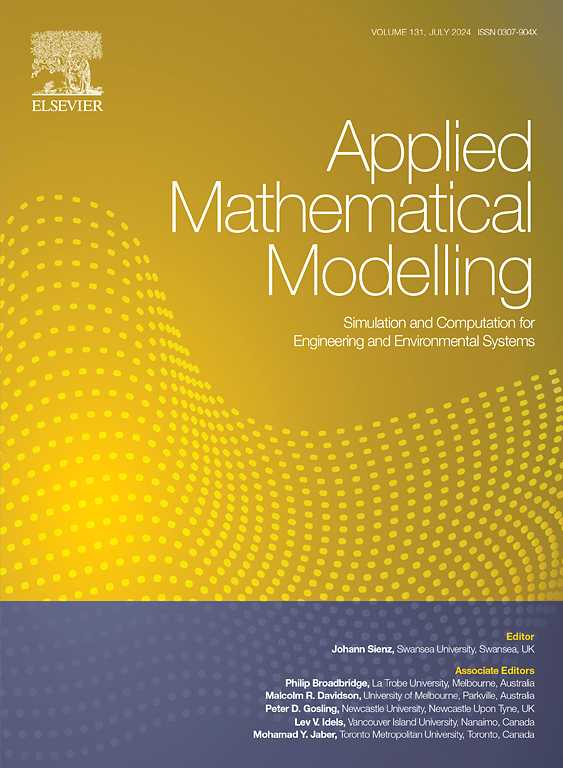Vibration PID control design by receptance-based partial eigenstructure assignment
IF 4.4
2区 工程技术
Q1 ENGINEERING, MULTIDISCIPLINARY
引用次数: 0
Abstract
In recent decades, the partial eigenstructure assignment problem has attracted considerable attention due to its practicality and significant benefits in vibration control. For linear vibration systems, enhancing system response can be achieved by strategically assigning zeros and poles. To meet the dynamic requirements of vibration systems, this paper presents a receptance-based approach for partial eigenstructure assignment using a novel PID controller. A comprehensive description and validation of the proposed method are provided. The PID controller is applied to the free vibration equation of a multi-degree-of-freedom linear system. Through the use of the Laplace transform and the Sherman-Morrison formula, the flexibility matrix of the closed-loop system is obtained. Under certain assumptions and constraints, the theoretical gain vector for PID control is determined using the Moore-Penrose generalized inverse. Furthermore, a practical strategy for optimizing sensor placement is proposed. The introduction of integral control inevitably results in the generation of new zero-pole pairs. A comprehensive explanation and analysis of these newly introduced zeros and poles, as well as the modified system, are provided. Two numerical examples validate the effectiveness of the proposed methodology.
求助全文
约1分钟内获得全文
求助全文
来源期刊

Applied Mathematical Modelling
数学-工程:综合
CiteScore
9.80
自引率
8.00%
发文量
508
审稿时长
43 days
期刊介绍:
Applied Mathematical Modelling focuses on research related to the mathematical modelling of engineering and environmental processes, manufacturing, and industrial systems. A significant emerging area of research activity involves multiphysics processes, and contributions in this area are particularly encouraged.
This influential publication covers a wide spectrum of subjects including heat transfer, fluid mechanics, CFD, and transport phenomena; solid mechanics and mechanics of metals; electromagnets and MHD; reliability modelling and system optimization; finite volume, finite element, and boundary element procedures; modelling of inventory, industrial, manufacturing and logistics systems for viable decision making; civil engineering systems and structures; mineral and energy resources; relevant software engineering issues associated with CAD and CAE; and materials and metallurgical engineering.
Applied Mathematical Modelling is primarily interested in papers developing increased insights into real-world problems through novel mathematical modelling, novel applications or a combination of these. Papers employing existing numerical techniques must demonstrate sufficient novelty in the solution of practical problems. Papers on fuzzy logic in decision-making or purely financial mathematics are normally not considered. Research on fractional differential equations, bifurcation, and numerical methods needs to include practical examples. Population dynamics must solve realistic scenarios. Papers in the area of logistics and business modelling should demonstrate meaningful managerial insight. Submissions with no real-world application will not be considered.
 求助内容:
求助内容: 应助结果提醒方式:
应助结果提醒方式:


